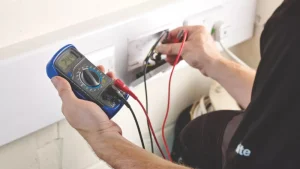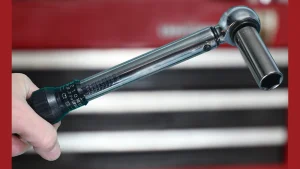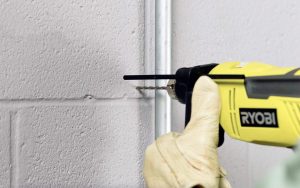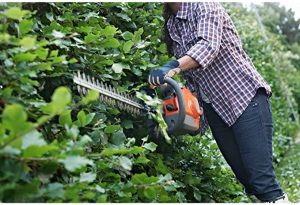When you’re taking on a home improvement project, especially one involving concrete, you might find yourself asking, “Do you need a hammer drill for concrete?” This question isn’t just about adding another tool to your collection; it’s about ensuring your project is successful and your efforts aren’t wasted.
Imagine trying to drill into a tough, unyielding surface with the wrong tool—it can be frustrating and time-consuming. By understanding the importance of the right equipment, you can save yourself from unnecessary stress and setbacks. Let’s dive into why a hammer drill might be your best companion for tackling concrete and how it can make your work easier, faster, and more efficient.
Get ready to discover how this powerful tool can transform your DIY projects and elevate your skills to the next level.

Credit: www.youtube.com
Basics Of Hammer Drills
Drilling into concrete requires a hammer drill for effective results. This tool combines rotary and hammering action to break through tough surfaces. Essential for construction tasks, it ensures precise and efficient drilling in concrete.
Understanding the basics of hammer drills is essential if you’re planning any concrete projects. These power tools are specifically designed to drill into tough surfaces like concrete, brick, and stone. Unlike regular drills, hammer drills use a hammering action that makes penetrating these hard materials easier and faster. But do you really need one for your concrete work? Let’s break it down.What Is A Hammer Drill?
A hammer drill is a tool that combines the rotation of a drill with a hammering action. This dual function allows it to break through tough materials more efficiently than standard drills. The hammering action is what sets it apart, delivering rapid, short thrusts to pulverize the concrete as the drill bit spins.How Does A Hammer Drill Work?
The mechanism inside a hammer drill is fascinating. As you press the trigger, two ribbed metal discs inside the tool rotate against each other, causing the drill bit to move forward and backward rapidly. This movement mimics the action of a tiny hammer. The result is a series of quick, powerful strikes that help break down the concrete.When Should You Use A Hammer Drill?
Consider the type of project you’re undertaking. If you’re hanging shelves on a concrete wall or installing heavy fixtures, a hammer drill is indispensable. Regular drills might struggle and could overheat or wear out quickly. If you’ve ever tried using a standard drill on a concrete wall and ended up with a dull bit and minimal progress, you know the frustration firsthand.Key Features To Look For
When choosing a hammer drill, focus on the power and comfort. Look for variable speed settings to adjust the intensity based on your task. Ergonomic designs can reduce fatigue during extended use. A good grip and a lightweight body make handling easier, especially in tight spaces.Can You Use A Hammer Drill For Regular Drilling?
Yes, many hammer drills come with a switch to turn off the hammering action, allowing them to function like a regular drill. This versatility means you can use it for different materials, not just concrete. However, it’s worth noting that they might be heavier than standard drills, so consider the trade-off if you’ll frequently switch between tasks. Thinking about the investment in a hammer drill might make you wonder about its necessity. Are your concrete projects frequent enough to justify it? Or perhaps borrowing or renting one could be a practical solution? Understanding these basics will guide you in making a more informed decision.
Credit: www.homedepot.com
Concrete Drilling Challenges
Drilling through concrete poses unique challenges. Concrete is tough and dense. Ordinary tools struggle to penetrate it. Professionals often use specialized equipment to handle concrete.
Concrete Composition
Concrete is a mix of materials. It includes cement, sand, gravel, and water. Each component adds strength. Together, they form a solid barrier. This makes drilling more difficult.
Tool Durability
Concrete wears out tools quickly. Drill bits need to be strong. Regular bits break under pressure. Hammer drills have durable bits. They withstand hard surfaces.
Vibration Control
Drilling concrete creates vibrations. Vibrations affect accuracy and comfort. Hammer drills reduce vibrations. This leads to smoother operation.
Time Efficiency
Concrete drilling takes time. Regular drills slow the process. Hammer drills speed it up. They save time and effort.
Noise Levels
Drilling concrete can be noisy. High noise levels disrupt surroundings. Hammer drills manage noise better. They provide a quieter experience.
Hammer Drill Vs. Regular Drill
When tackling a concrete project, you might find yourself wondering whether you need a hammer drill or if a regular drill will suffice. This decision can significantly impact the ease and success of your project. Understanding the differences between these tools is crucial. Let’s break down their power, performance, and design differences to help you make the right choice.
Power And Performance
A hammer drill is designed specifically for hard materials like concrete. It combines rotary motion with a hammering action, making it ideal for drilling into stone or masonry. This extra power can save you time and effort, especially on tougher projects.
Contrast this with a regular drill, which operates using only rotary motion. While perfect for wood and metal, it can struggle with concrete. You might find yourself exerting more energy, and still not getting the desired result.
Imagine trying to drill into a concrete wall with a regular drill. You’d likely spend more time fighting the resistance than actually getting the job done. With a hammer drill, the task becomes more manageable and efficient.
Design Differences
The design of a hammer drill includes a mechanism that generates rapid hammering action. This feature is absent in regular drills. It’s this hammering motion that allows the drill bit to break up the concrete as it spins.
Hammer drills often have a bulkier build to accommodate this extra functionality. You might notice a more robust grip and additional settings for controlling the hammering intensity. This design aspect can enhance your control and comfort during use.
Consider the weight and size before purchasing. A hammer drill might be slightly heavier, but the added features make it worthwhile for concrete projects. Would you prefer a lighter tool that struggles with tough materials, or a heavier one that gets the job done efficiently?
Choosing between a hammer drill and a regular drill ultimately comes down to your specific needs and the scope of your project. Whether you’re a weekend warrior or a seasoned DIY enthusiast, understanding these differences can empower you to make informed decisions. Which tool aligns with your project goals and personal comfort? It’s a decision worth pondering as you prepare for your next concrete endeavor.
When To Use A Hammer Drill
A hammer drill is essential for drilling into concrete surfaces. It provides the power needed to break through tough material. Choose a hammer drill when regular drills struggle with concrete’s density.
When tackling concrete projects, the right tools can make all the difference. A hammer drill is often a go-to for many professionals and DIY enthusiasts. But do you really need one for your concrete tasks? This question can lead to a mix of considerations. Knowing when to use a hammer drill can save you time, effort, and even money.Suitable Projects
A hammer drill is a must-have for certain jobs. If you’re mounting heavy objects onto concrete walls, like shelves or brackets, a hammer drill provides the necessary power. It ensures the screws and anchors are securely fastened. Another suitable project is creating holes for electrical wiring through masonry. A hammer drill makes this task quicker and more efficient. Consider using it when you need precision and speed.Material Considerations
Not all surfaces are the same, and understanding the material is crucial. Concrete, especially cured or reinforced types, often requires the force of a hammer drill. Using a regular drill might lead to frustration and inadequate results. However, if you’re working with softer materials like plaster or drywall, a hammer drill may be too intense. In those cases, a standard drill will suffice and help avoid unnecessary damage. Always assess the material before deciding. If you’re like me, you might have once used a regular drill on an old concrete wall, hoping for the best. The result was a dull bit and a half-drilled hole. This taught me the importance of matching the tool to the task. Do you have projects lined up that could benefit from the precision of a hammer drill? Or maybe you’ve found yourself struggling with the wrong equipment? Understanding when to use a hammer drill can transform your approach to concrete work.Benefits Of Using Hammer Drills
Hammer drills offer significant benefits for concrete work. They are essential tools for both professionals and DIY enthusiasts. Their unique features make them superior for drilling tough materials like concrete.
Efficiency And Speed
Hammer drills work faster than regular drills. They combine rotary action with a hammering motion. This dual action increases drilling speed. It makes tasks quicker and less tiring. With a hammer drill, you finish projects in less time.
Durability And Longevity
Hammer drills are built to last. They withstand tough conditions and heavy use. Their robust design ensures they don’t wear out quickly. You can rely on them for many years. Investing in a hammer drill saves money in the long run.
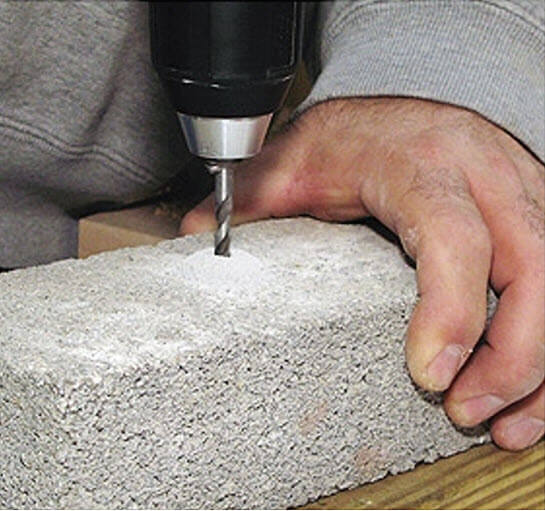
Credit: toolstoday.com
Choosing The Right Hammer Drill
When tackling concrete, a regular drill often won’t suffice. A hammer drill is essential for penetrating tough surfaces. Choosing the right hammer drill can make all the difference in your project. This guide will help you make an informed decision.
Key Features To Look For
Consider the power of the drill. More power helps in drilling faster. Check the drill’s speed settings. Variable speeds provide better control. Look for a comfortable grip. Comfort reduces fatigue during long tasks. Ensure the drill has a durable build. Longevity is crucial for frequent use.
Top Brands And Models
Several brands stand out in the market. Bosch offers reliable hammer drills. DeWalt is known for durability and power. Makita provides excellent balance and control. Milwaukee is praised for innovative features. Each brand offers unique advantages. Research models within these brands to find the best fit.
Safety Tips For Drilling Concrete
Hammer drills make concrete drilling easier and safer. Protective gear like goggles and gloves is essential. Keep the drill steady to prevent accidents.
Drilling into concrete is not just about power and precision; it’s also about ensuring safety. Whether you’re a seasoned DIY enthusiast or a beginner, understanding safety tips is crucial. A hammer drill is a powerful tool, and with great power comes the need for responsible handling. So, before you start your project, consider these essential safety measures that can protect you and make your task easier.Protective Gear
Safety begins with what you wear. Always use safety goggles to protect your eyes from flying debris. Concrete dust can be harmful if inhaled, so wear a dust mask to keep your lungs safe. Hearing protection is also important, as hammer drills can be quite loud. Consider using earplugs or earmuffs to prevent hearing damage. Finally, wear sturdy gloves to maintain a firm grip on the drill and protect your hands from vibrations.Proper Techniques
How you handle the drill matters just as much as what you’re wearing. Start by securing the drill bit properly to prevent it from slipping. Ensure the drill is perpendicular to the surface for a clean and accurate hole. Apply consistent pressure without forcing the drill. This reduces the risk of breaking the bit or damaging the material. Take breaks to avoid overheating the drill and to clear away dust, which can reduce visibility and precision. Consider this: Have you ever found yourself struggling to maintain control of a tool? It’s often because the technique isn’t right. Mastering proper handling can prevent accidents and increase efficiency. By focusing on protective gear and proper techniques, you equip yourself with the best practices to safely tackle any concrete drilling project. Are there any other safety tips you swear by when using a hammer drill?Maintenance Of Hammer Drills
Maintaining a hammer drill ensures it works effectively on concrete surfaces. Regular care prevents issues and extends the drill’s lifespan. Neglect can lead to costly repairs or replacements.
Routine Care
Routine care is essential for a hammer drill’s longevity. Keep the drill clean after each use. Dust and debris can affect its performance. Wipe the drill with a clean cloth. Check the air vents for blockages. Ensure the bits are sharp and not worn out. Lubricate moving parts regularly. Use manufacturer-recommended oils or greases. Store the drill in a dry place. Moisture can cause rust and damage.
Troubleshooting Common Issues
Hammer drills can face common issues during use. If the drill overheats, check the air vents. Blocked vents restrict airflow. Clean them to improve cooling. When the drill loses power, inspect the power cord. Frayed cords can cause electrical failures. Replace damaged cords immediately. If the drill vibrates excessively, check the bit. Loose bits can cause instability. Tighten or replace the bit if needed. Listen for unusual noises. They might indicate internal problems. Consult a professional if noises persist.
Frequently Asked Questions
Should I Use A Hammer Drill In Concrete?
Yes, use a hammer drill for concrete. It efficiently drills through tough surfaces. Ensure you have the correct drill bit.
Can You Drill Into A Concrete Wall With A Regular Drill?
Yes, you can drill into a concrete wall with a regular drill. Use a masonry drill bit. Ensure your drill has enough power. Consider using a hammer drill for better efficiency. Remember to wear safety goggles and a dust mask during the process.
Can You Screw Directly Into Concrete?
You can screw directly into concrete using concrete screws. Drill a pilot hole first with a masonry bit. Ensure the hole matches the screw size. Insert the screw using a screwdriver or drill. This method provides a strong hold. Always use proper safety equipment while drilling into concrete.
Can I Use A Cordless Drill For Concrete?
Yes, you can use a cordless drill for concrete. Ensure it has a hammer function and a masonry bit. Choose a drill with high power and sufficient battery life for optimal performance. For better results, consider pre-drilling smaller pilot holes before using larger bits.
Conclusion
Using a hammer drill makes concrete work easier and faster. It’s efficient for tough surfaces. Regular drills might struggle with dense materials. So, a hammer drill is a wise choice for concrete tasks. This tool ensures precision and ease. Perfect for both DIY projects and professional jobs.
It saves time and energy, giving better results. Consider the project size and frequency of use. Choose a hammer drill if dealing with concrete regularly. It’s an investment in quality and efficiency. Make your construction projects smoother and more manageable with the right tool.

